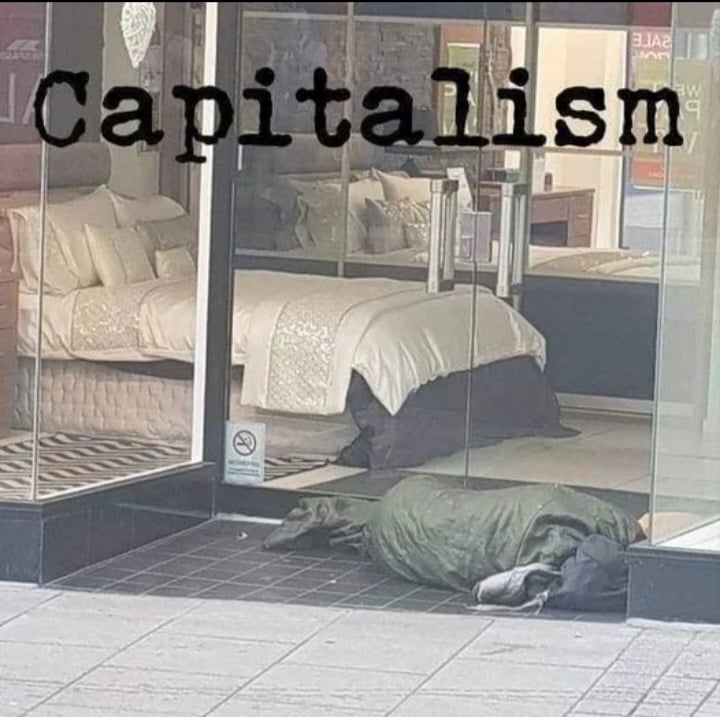this post was submitted on 04 Dec 2023
1254 points (87.8% liked)
A Boring Dystopia
9756 readers
1438 users here now
Pictures, Videos, Articles showing just how boring it is to live in a dystopic society, or with signs of a dystopic society.
Rules (Subject to Change)
--Be a Decent Human Being
--Posting news articles: include the source name and exact title from article in your post title
--Posts must have something to do with the topic
--Zero tolerance for Racism/Sexism/Ableism/etc.
--No NSFW content
--Abide by the rules of lemmy.world
founded 1 year ago
MODERATORS
you are viewing a single comment's thread
view the rest of the comments
view the rest of the comments

That's just unfaithful interpretation of the argument, and you know it. US on average has 27 empty houses per a homeless person.
Are those houses like habitable right now? I agree that there is a mismatch but 1:27 ratio seems high to me.
You might be confused because typically that figure refers to 'homes', not 'houses'. Apartments and other multi-family housing types are included in that figure.
Alright but still. There must be at least a million homeless Americans if not more. That would mean 27 million housing units sitting on the market now ready to go and not be sold or rented out? That dwarfs almost any city in the US, I can't even picture it. My building has three units for rent all occupied so you would have my building in a line of 9 million other ones I guess it takes about 1 seconds to walk across the front of my building, a line of 9 million would take 2,500 hours just to walk past, or a bit under a third of a year if you walked non-stop 24/7.
This is very very large number.
Vacant homes are any home that's not someone's primary residence when they calculate vacancies.
That includes vacation homes, temporary housing for traveling workers or college students, houses that are sold or rented but haven't been moved into yet, housing held up in divorce or estate proceedings, etc.
According to the census, last year there were 15 million vacant homes. Yes, that's a lot, and yes, many can't reasonably have a homeless person live there.
It is absolutely a large number.
Might also help to know that this number likely also includes AirBNB's and timeshare rentals. 27 million, spread over 3 million square miles (size of the US) and often in high-density buildings, including units that may appear to be occupied but are transiently used for only a third of the year.
That's technically true, but really not important. Houses are defined as vacant if they're unoccupied on the day of a census. There's many reasons a house might be technically vacant, but not currently be able to house a homeless person.
Was the house just sold, and is it unoccupied for a week or a month between owners? It's vacant. Did the owner just move into hospice or a memory care unit and their children haven't yet sold the house because they need to arrange an estate sale? It's vacant. Is the house under construction but is mostly built? It's vacant. Is it not safe to live in, but not officially condemned? It's vacant.
Want to move to a city? Either you have to find the apartment of someone moving out, or you have to move into a vacant unit.
Having a good number of vacant homes is a good thing, actually; having low numbers of vacancies in an area leads to housing becoming more expensive because you can't move into a unit that isn't vacant. Increasing housing supply relative to population leads to higher vacancy rates, but decreases housing costs.
Housing-first approaches to homelessness seem to be good in practice. But those are typically done by either government-built housing or government- subsidized housing; it's mostly orthogonal to vacancy rates.
Right so the problem is that they don't have money to buy those homes. It's still not a problem with the bed store
You understand what the word "visualisation" means, right?
The problems are:
Interpreting everything through individuality is a choice. Just because you refuse to acknowledge systemic injustice does not mean it does not exist.